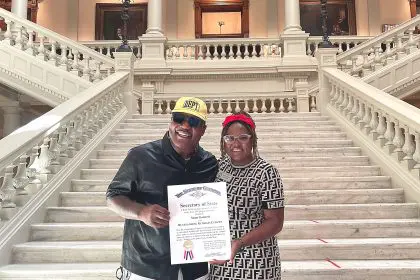
 Rosyln Love is gripped with fear every night when she turns the corner to return to her apartment on Chicago‘s South Side. “I work nights and I’m scared to come home,“ she told rolling out of the gang-infested neighborhood where an outbreak murders has the area on edge. “But what else can you do? But I pray, so I have God watching over me.”
Rosyln Love is gripped with fear every night when she turns the corner to return to her apartment on Chicago‘s South Side. “I work nights and I’m scared to come home,“ she told rolling out of the gang-infested neighborhood where an outbreak murders has the area on edge. “But what else can you do? But I pray, so I have God watching over me.”
One of America’s grandest cities is again being besieged by a wave of war-like violence that is terrorizing residents and has city leaders and local police grappling for solutions.
Chicago law enforcement announced they will employ “gang intelligence” — computer analysis and mobile strike teams — to prevent summer violence, Superintendent Jody Weis said in a statement. The intense focus on pinpointing trouble spots and collecting intelligence is important because most of the violent crimes in the city occur in less than 9 percent of all blocks, Weis said.
Weis’ statement to the press comes on the heals of a very bloody April in America’s Second City that saw more than 80 residents shot within the last three weeks, mostly on the city’s South and West sides. This comes as good news to South Side residents, who are still dazed over the death of toddler Cynia “Coco” Cole who was shot in the head as she sat in the backseat of a car with her two sisters at 11 p.m. Wednesday.
“This is a real sad travesty. I think this is another form of urban genocide. I really pray for our young people,” says Almeda Sims says to rolling out, recalling two years ago when a boy was murdered after he had stolen back the bicycle that was originally stolen from him. “It happened right in front of us in broad daylight. This happens all the time, right in our vicinity.”
To combat this, the police plan is expected to kick off next week and will rely on advanced computer analysis to pinpoint specific city blocks where violence is brewing. Most of the violence takes place on 9 percent of the city blocks, police statistics show. That information would then be quickly relayed to strategic response units — both at the detective area level and the citywide level — who would saturate the hot spots to quiet violence before it flares up. Weis refused to identify what specific blocks are being targeted.
Sims has enrolled her two children — Trevon, 10, and Mia, 9 — in an after-school program to help keep the safe from the violence. “They go around and comfort families that have had a tragic loss. They also have activities and programs to keep them off the streets — basketball, cheerleading. It’s a very good program funded by the state of Illinois,” she says. –terry shropshire
Captions:
Photo left: Rosyln Love
Photo right: Almeda Sims










